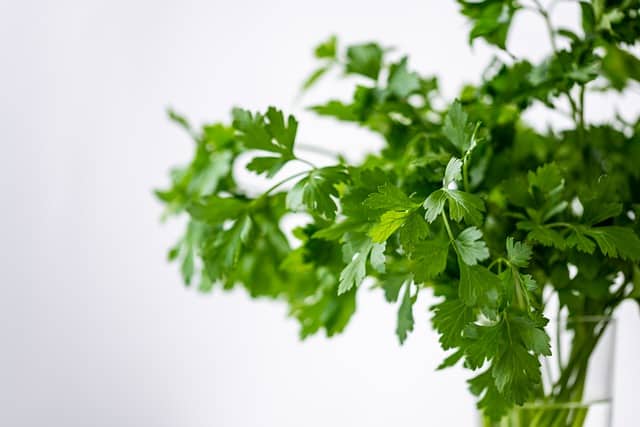Many people use the best healing herbs for skin to treat various common health problems, incredibly minor or chronic illnesses. Since most of these plants have medicinal characteristics, it can be a low-cost and readily available option. Many medicinal herbs contain stimulants, anti-inflammatory antioxidants.
It also has antibacterial, antiviral, relaxing, and many other effects in various situations. Since the beginning of time, humanity has looked to nature for healing. It includes employing botanicals to improve the health of your skin. Herbs can treat a wide range of skin conditions, from cuts and wounds to acne and eczema.
This blog post will show you how to use the best healing herbs for skin and their benefits for health and healing.
Best Healing Herbs for Skin and Their Benefits

Wounds
Arnica, goldenrod, Gotu, yarrow, Kola, and marshmallow are some medicinal best healing herbs for skin. It can help the recovery process and fight against infections.
Yarrow
When it comes to slow-healing wounds, yarrow can help speed up the healing process and improve circulation in the affected area. This herb has anti-inflammatory effects and uses it in deep wound poultices. Where it can often result in healing without apparent scarring.
How to Use – The yarrow plant’s feathery leaves can be use as a therapeutic swab or ground into a poultice. It can be use with other herbs and apply topically.
Marshmallow
The marshmallow plant’s root is rich in wound-healing minerals and antioxidants. Making it an effective wound healer. The root secretes mucilage to aid wound healing by reducing inflammation and fighting infections.
How to Use – To encourage speedy healing, a strong dose of mucilage from the roots. It can be administer topically in minimal amounts straight to the site of a scrape or cut.
Arnica
Arnica has to aid in treating wounds following surgery and reducing the occurrence of scars from wounds in studies.
How to Use – To prepare a beneficial infusion, combine one teaspoon of dry herbs with 1/2 cup water. Moreover, you can apply a more strong dose of arnica oil once it is ready and steam drained from the herb.
Gotu Kola
Gotu Kola is a type of Gotu kola that fabled plant. And it has long used to quicken the recovery of injuries and wounds and reduce swelling and pain. This herb contains saponins, which increase circulation and hasten the healing process.
How to Use – You can prepare a wound-healing solution by mixing Gotu Kola into other lotions or creams. Or merely using such a herb’s essential oil for a potent dosage of health benefits.
Goldenrod
Goldenrod has been use for generations to cure bacterial infections, wound cleansing, and speed up recovery. The concentration of saponins and flavonoids in this herb contributes to this.
How to Use – Boil some water and make a cup of goldenrod tea that you can drink for inner healing. After that, let the tea completely cool before soaking a gauze or cotton ball in it and applying it topically to your injuries.
Skin
Chamomile, aloe vera, lavender, tea tree, and comfrey are some of the most popular medicinal herbs for anti-aging and hydrating effects.
Chamomile
This herb is high in antioxidants, including potent flavonoids, which help fight oxidative stress and relieve inflammatory conditions in the skin. It can help assist in the removal of scars and wrinkles.
How to Use – Chamomile is commonly prepare as tea and drink regularly, but it can also put in cotton balls and apply to an inflamed skin region.
Aloe Vera is a type of aloe
This herb is well-known for its calming, anti-inflammatory, and analgesic qualities worldwide. Aloe vera gel is a beautiful all-around cure for healing damaged skin, defending the skin from infection, and treating irritation from eczema or psoriasis.
How to Use – The herb Aloe vera is most commonly use as a thick gel that may take directly from the plant’s leaves. It can provide soothing comfort and alleviate inflammation. Only a tiny amount is require.
Comfrey
Pharmaceutical companies have been looking for the active components in comfrey for decades since it has wound-healing capabilities that help speed up the healing process on the skin. Traditional healers have been using this medicine for hundreds of years.
How to Use — The leaves of the comfrey herb can be apply directly to wounds to speed up healing, earning it the nickname “knit bone.” This herb should not consumed internally.
Lavender
This herb’s scent is pleasing and has many health advantages, including antibacterial and antioxidant properties. It can reduce scars and wrinkles, giving your skin a youthful look.
How to Use – Lavender oil is frequently use in cosmetics, and lavender petals are often immerse in bathtubs for a scented and soothing soak.
A tea Tree is a type of tree that grows
Tea tree is one of the world’s most potent antiviral, antibacterial, antifungal, and anti-inflammatory herbs, and it’s excellent for healing any skin irritation or illness.
How to Use – Tea tree oil, you can apply straight to the skin if diluted. Tea tree leaves need squeezing to release the natural oils, while poultices made from the leaves have proven effective.
Diseases
Turmeric, cinnamon, rosemary, and coriander are therapeutic herbs that are effective against specific disorders.
Turmeric
Turmeric’s major curcumin ingredient is associate with reducing the risk of cardiovascular disease, alleviating arthritis symptoms. And resolving gastrointestinal issues, making it one of the greatest healing herbs available.
How to Use – Turmeric is a popular spice in Asian cuisine, and many people use it, including everything from fruit smoothies to curry spice blends. It can also make it into a healthy tea.
Rosemary
Rosemary has been demonstrated in studies to have cognitive-enhancing qualities, lower the risk of heart disease, and act as an anticancer agent.
How to Utilize – The most common way to use this herb is to cook with it. It has an earthy, almost flowery flavor that makes it a favorite meat seasoning. For many people, rosemary tea is also a popular choice.
Cinnamon
Cinnamaldehyde, the main chemical in cinnamon, has been related to lowering heart disease risk, lowering blood pressure, and reducing gastrointestinal inflammation.
How to Use – Cinnamon is added to various foods, but brew a strong cup of cinnamon tea for a concentrated dosage of its nutrients.
Coriander
This herb is known for lowering cholesterol and blood sugar levels, preventing gastrointestinal distress, and strengthening the immune system, making it an excellent choice for disease prevention.
How to Apply – Coriander seeds and crushed powder, also known as cilantro in other parts of the world, are quite easy to include in a variety of dishes, or you can dry-fry them and eat them whole!
Disorders
Healing herbs such as ginseng, ginkgo Biloba, black cohosh, lobelia, hyssop, and skullcap can treat physical and mental ailments.
Hyssop
This uncommon plant is shown to communicate directly with the central nervous system, allowing it to control several nerve illnesses, including epilepsy, as well as cardiovascular issues.
Fresh hyssop leaf tea can be made by steeping the leaves in boiling water for 10-15 minutes. If you drink this once a day, you can reduce your nervous system crises.
Lobelia
Multiple sclerosis is one of the most debilitating nervous system disorders, yet study has discovered that lobelia’s active elements can help alleviate some of the disorder’s symptoms.
How to Use – Make a tincture with lobelia and other stimulating herbs to alleviate the intensity of this and other diseases. Take 20 drops of the tinctures every 30 minutes for a total of 2 hours.
Ginkgo Biloba
Ginkgo biloba has been used for thousands of years to treat balance issues and illnesses such as anxiety, depression, and stress. It can boost mood and rebalance hormones in the body in a short amount of time.
How to Use – This herb is most commonly used in extract form, but it is also available in tablet, liquid, or capsule form at practically any health food store.
Ginseng
Ginseng is particularly beneficial for both hyperactivity problems and some emotional disorders, as it stimulates the nervous system and regulates hormone levels.
How to Use – Freshly cut ginseng root can be steeped to make a potent tea, based on how long you steep it. You may need 1 cup per day for a balanced and peaceful mind.
Cohosh (sometimes known as black cohosh)
If you have an anxiety issue, this herb proves to be very useful, especially in the case of anxiety caused by menopause.
How to Use – Due to the herb’s potency, it’s best to take it in capsule form. Black cohosh in its organic state can be harmful in large doses.
3 of the Most Effective Skin-Healing Herbs

1. Chamomile is good for the skin.
Chamomile is one of the best healing herbs for skin, and everyone should have some on hand. You can use it for various conditions, including stress, sleep, anxiety, digestive disturbances, and even immunological support. It is said to symbolize the comfort of a mother’s hug.
Chamomile’s antihistamine, anti-inflammatory, antibacterial, and antiseptic characteristics make it an excellent skin health therapy. Chamomile can help stimulate tissue repair, speed up the healing of ulcers, sores, sunburn, burns, and varicose ulcers, and cure various other skin conditions like allergic responses, dermatitis, and itching.
Its relaxing and calming effects reduce pain and inflammation while also soothing the skin. Chamomile is also high in antioxidants and flavonoids, which help to protect the skin from age-causing free radicals.
2. Lemon Balm is good for the skin.
Lemon balm has relaxing and calming effects, making it an excellent herb for relieving stress and pain. Because it contains antiseptic, antibacterial, antifungal, and antihistamine characteristics, it is an excellent herb for wounds, cuts, rashes, and other skin disorders.
When rubbed into joints and muscles, it contains anti-inflammatory and relaxing effects that can help relieve pain. Lemon balm’s antiviral qualities are efficient against the herpes virus. Therefore you can use it to treat cold sores. Lemon balm is also effective for neuralgia, period pains, joint and muscular discomfort, bug stings, and bruising.
3. Moringa is good for the skin.
This superfood is nutrient-dense and beneficial to a variety of body systems. You can take it internally to help with digestion, cognition, immunity, and endocrine function, among other things. It’s an antibacterial, antifungal, and antiseptic powerhouse that speeds up the healing of minor injuries like bruises, wounds, burns, rashes, and bug bites.
Moringa can be used to treat aching muscles and joints, bruising, and spasms or cramps because of its antispasmodic and anti-inflammatory effects. It is particularly beneficial to the skin due to its nutritious properties. Moringa is beneficial to acne sufferers since it cleanses and eliminates pollutants while rejuvenating damaged skin. Its antioxidant qualities may aid in the prevention of wrinkles and sagging.
Herbs That Help You Have Clear Skin

It takes some time to cleanse and naturally mend the body through a clean diet. And it was discovered that including the best healing herbs for skin into an everyday routine was an essential aspect of getting better and faster outcomes. So, what exactly does this mean when you say “herbs”?
Parsley and Chinese herbs were part of the daily routine of mending from the skin from the inside out. We’re all familiar with parsley. It’s one of the most often used herbs. For as long as I can remember, it’s been a popular garnish on our food.
Parsley’s volatile oil has antibacterial and antifungal characteristics, which aid in treating infections and preventing acne. This miraculous herb has three important vitamins for healthy skin: zinc, vitamin C, and vitamin K.
Zinc aids in the regulation of inflammation, skin healing, and skin regeneration. Antioxidants included in vitamin C serve to protect and cure the skin. Vitamin K aids in the repair of acne scars by speeding up the healing process.
So use parsley in salads, as a garnish on hot dishes, in your juicer (you’ll need a lot of it in this case), or in a tea. I like flat-leaf parsley (Italian) for parsley tea since it is fragrant and less bitter. I put 14 cups of parsley in a pot of boiling water and steeped it for 5 minutes.
Chinese Herbs
In Los Angeles, A couple of amazing people who practice Chinese medicine and own their clinics. And their Eastern wisdom was extremely beneficial to everyone. Before meeting them, You know nothing about Chinese medicine. The only herbs you know were common culinary herbs like oregano, parsley, cilantro, basil, and rosemary.
Traditional Chinese medicine appeals to you since it is highly personalized. Created a herbal mixture, and there were a lot of them mixed! You are not even going to say which ones they used since, first and foremost, you’re not familiar with them and, more importantly, it’s what worked for you at the time.
Every month, You had to visit their clinic to examine and make adjustments to the formula. It’s usually only a minor adjustment–adding this, removing that, and so on. For a couple of years, you will take these best healing herbs for skin in liquid form every day, twice a day.
The more you learn, the more you realize that your bodies require nothing more than what you may find in nature. So, the next time you’re at the grocery store or a farmer’s market, pick up a large bundle of parsley.
If you want to learn more about Chinese Medicine and have access to it in your community, you are encouraged to do so. Before determining the best healing herbs for skin in the United States, it’s critical to understand the health benefits.
Anti-inflammatory
Herbs can reduce inflammation in various places, including your joints, stomach, muscles, intestines, nervous system, and more. Several plants can reduce pro-inflammatory cell activity. As a result, stiffness, irritation, and pain are reduced to a lesser extent. Turmeric, licorice, and Boswellia are some herbs that have these qualities.
Antimicrobial Properties
As we all know, Herbs contain antibacterial properties that can prevent bacteria from growing. Garlic, thyme, clove, and other antibacterial herbs are among them. You may locate various herbal product companies online and choose the best organic herbal product supplier.
Antispasmodic Properties
Herbs like peppermint, kava, cramp bark, and valerian have been shown in studies to help with muscle discomfort. Herbal remedies are available for such problems through online portals. All of these products are known for their antispasmodic properties, which can help you get back to your usual workout program by reducing muscular pain in a short amount of time.
Carminative
We’re all aware that herbs have carminative properties to help with gas difficulties. Fennel, ginger, chamomile, and peppermint are some of the most popular plants for preventing flatulence. If you’re seeking high-quality items, look no further than the greatest online organic anti-aging serum.
Herbal Remedies vs. Over-The-Counter Medications
According to studies, OTC medications is use as a short-term or emergency treatment. OTC medications provide immediate results, but they often have adverse effects. However, the whole plant is more important than a single element when it comes to herbs. Herbs are nutrient-dense foods with healing properties.
The source of healing herbs for the skin or body is one of the most significant advantages of purchasing them. All of these goods are completely natural and come from Mother Nature. Similarly, OTC medicines, manufactured from plant extracts, but the finished product subject to tests and lab processing.
Conclusion
Choosing the best among them, on the other hand, is a task that will be described later. No one can deny that all herbs have health and beauty benefits for your body and skin. To live a healthy life, everyone should use the best healing herbs for skin in their diet or medication to combat immune system issues.
